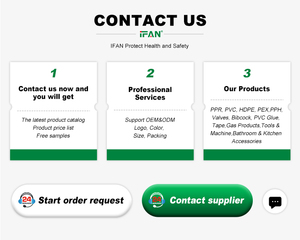Introduction to Pipe Joining Coupling
In the world of plumbing and piping systems, the pipe joining coupling is a vital component that ensures secure connections between different pipes. These fittings are designed to facilitate smooth, leak-free transitions in various piping configurations, making them essential in residential, commercial, and industrial applications. With the increasing demand for efficiency and reliability in plumbing systems, understanding the different types and features of pipe joining couplings becomes crucial for effective implementation.
Types of Pipe Joining Coupling
Pipe joining couplings come in various designs and materials, catering to different plumbing needs. Here are the main types:
- Screw Couplings: These couplings use threaded ends to connect pipes securely, making them easy to install and remove for maintenance.
- Push-Fit Couplings: Designed for quick installation, push-fit couplings don’t require tools, allowing for rapid assembly, especially in tight spaces.
- Welded Couplings: Ideal for metal pipes, these couplings are welded to ensure a strong, permanent bond, offering long-term durability.
- Sleeve Couplings: These are used to join two pipes of the same diameter, providing a seamless connection with a minimum risk of leaks.
- Compression Couplings: Utilizing a compressive force, these couplings create a tight seal and are often employed in joining pipes of different materials.
Applications of Pipe Joining Coupling
The versatility of pipe joining couplings makes them suitable for a multitude of applications:
- Residential Plumbing: Used in water supply lines, drainage systems, and HVAC systems to ensure proper flow and pressure management.
- Industrial Applications: Essential in factories for large-scale industrial piping systems, where durability and reliability are paramount.
- Irrigation Systems: These couplings play a critical role in agricultural setups, allowing for efficient water distribution in gardens and farms.
- Fire Protection Systems: Employed in fire sprinkler systems, ensuring vital connections are effectively sealed to prevent catastrophic failures.
Features and Advantages of Pipe Joining Coupling
Understanding the key features and advantages of pipe joining couplings can help you make informed decisions while selecting the right coupling for your needs:
- Leak-Proof Design: Most couplings are engineered with innovative sealing technologies to eliminate the risk of leaks, ensuring system integrity.
- Ease of Installation: Various types, like push-fit and screw couplings, allow plumbers to install or replace components quickly and efficiently.
- Durability: Made from high-quality materials such as PVC, copper, or steel, these couplings provide long-lasting performance under varying conditions.
- Cost-Effective: Investing in high-quality couplings ultimately reduces maintenance costs and downtime, offering excellent value over time.
- Versatile Compatibility: Pipe joining couplings can connect various types of pipes, accommodating different diameters and materials with ease.












































































































































































